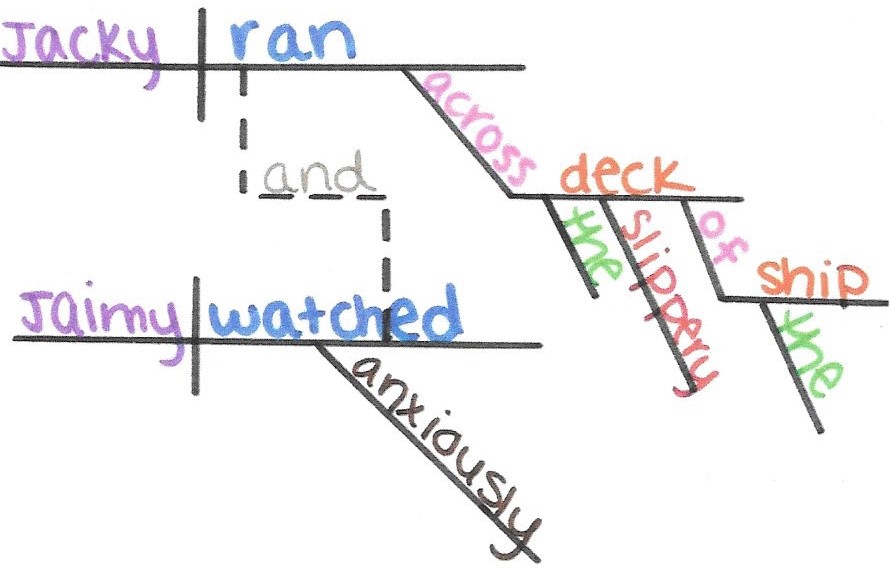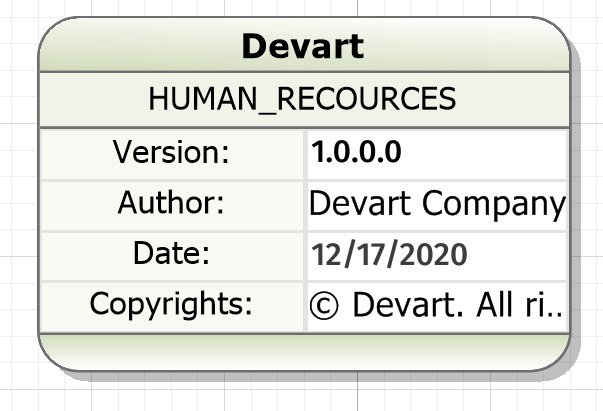This chapbook certainly has a female bent (we hesitate to say feminist, in that it's not overtly political). Her other two books are available from Sarabande Books and Helicon Nine Editions. Check out her work in DIAGRAM issue. 5.5' x 8.5', 44 pp. ISBN 0-9725095-5-0 out of print. Ishikawa diagrams (also called fishbone diagrams, herringbone diagrams, cause-and-effect diagrams, or Fishikawa) are causal diagrams created by Kaoru Ishikawa that show the potential causes of a specific event. Common uses of the Ishikawa diagram are product design and quality defect prevention to identify potential factors causing an overall.
| Ishikawa diagram | |
|---|---|
| One of the Seven Basic Tools of Quality | |
| First described by | Kaoru Ishikawa |
| Purpose | To break down (in successive layers of detail) root causes that potentially contribute to a particular effect |
Ishikawa diagrams (also called fishbone diagrams, herringbone diagrams, cause-and-effect diagrams, or Fishikawa) are causal diagrams created by Kaoru Ishikawa that show the potential causes of a specific event.[1]
Common uses of the Ishikawa diagram are product design and quality defect prevention to identify potential factors causing an overall effect. Each cause or reason for imperfection is a source of variation. Causes are usually grouped into major categories to identify and classify these sources of variation.
Overview[edit]
The defect is shown as the fish's head, facing to the right, with the causes extending to the left as fishbones; the ribs branch off the backbone for major causes, with sub-branches for root-causes, to as many levels as required.[2]
Ishikawa diagrams were popularized in the 1960s by Kaoru Ishikawa,[3] who pioneered quality management processes in the Kawasaki shipyards, and in the process became one of the founding fathers of modern management.
The basic concept was first used in the 1920s, and is considered one of the seven basic tools of quality control.[4] It is known as a fishbone diagram because of its shape, similar to the side view of a fish skeleton.
Mazda Motors famously used an Ishikawa diagram in the development of the Miata (MX5) sports car.[5]

Advantages[edit]
- Highly visual brainstorming tool which can spark further examples of root causes
- Quickly identify if the root cause is found multiple times in the same or different causal tree
- Allows one to see all causes simultaneously
- Good visualization for presenting issues to stakeholders
Disadvantages[edit]
- Complex defects might yield a lot of causes which might become visually cluttering
- Interrelationships between causes are not easily identifiable[6]
Root causes[edit]
Root-cause analysis is intended to reveal key relationships among various variables, and the possible causes provide additional insight into process behavior.
The causes emerge by analysis, often through brainstorming sessions, and are grouped into categories on the main branches off the fishbone. To help structure the approach, the categories are often selected from one of the common models shown below, but may emerge as something unique to the application in a specific case.
Circuit Diagram Author
Each potential cause is traced back to find the root cause, often using the 5 Whys technique.
Typical categories include:
The 5 Ms (used in manufacturing)[edit]
Originating with lean manufacturing and the Toyota Production System, the 5 Ms is one of the most common frameworks for root-cause analysis:[7]
- Man / mind power (physical or knowledge work, includes: kaizens, suggestions)
- Machine (equipment, technology)
- Material (includes raw material, consumables, and information)
- Method (process)
- Measurement / medium (inspection, environment)


These have been expanded by some to include an additional three, and are referred to as the 8 Ms:[8]
- Mission / mother nature (purpose, environment)
- Management / money power (leadership)
- Maintenance
The 8 Ps (used in product marketing)[edit]
Diagram Auto Air Conditioner
This common model for identifying crucial attributes for planning in product marketing is often also used in root-cause analysis as categories for the Ishikawa diagram:[8]
- Product (or service)
- Price
- Place
- Promotion
- People (personnel)
- Process
- Physical evidence (proof)
- Performance
The 8 Ps are primarily used in product marketing.
The 4 Ss (used in service industries)[edit]
An alternative used for service industries, uses four categories of possible cause:[9]
- Surroundings
- Suppliers
- Systems
- Skill
See also[edit]
References[edit]
- ^Ishikawa, Kaoru (1968). Guide to Quality Control. Tokyo: JUSE.
- ^Ishikawa, Kaoru (1976). Guide to Quality Control. Asian Productivity Organization. ISBN92-833-1036-5.
- ^Hankins, Judy (2001). Infusion Therapy in Clinical Practice. p. 42.
- ^Tague, Nancy R. (2004). 'Seven Basic Quality Tools'. The Quality Toolbox. Milwaukee, Wisconsin: American Society for Quality. p. 15. Retrieved 2010-02-05.
- ^Frey, Daniel D.; 1943-, Fukuda, S. (Shūichi); Georg., Rock (2011). Improving complex systems today : proceedings of the 18th ISPE International Conference on Concurrent Engineering. Springer-Verlag London Ltd. ISBN978-0857297990. OCLC769756418.CS1 maint: numeric names: authors list (link)
- ^'How to use the fishbone diagram to determine data quality root causes'. LightsOnData. 2018-12-05. Retrieved 2018-12-15.
- ^Weeden, Marcia M. (1952). Failure mode and effects analysis (FMEAs) for small business owners and non-engineers : determining and preventing what can go wrong. ISBN0873899180. OCLC921141300.
- ^ abBradley, Edgar (2016-11-03). Reliability engineering : a life cycle approach. ISBN978-1498765374. OCLC963184495.
- ^Dudbridge, Michael (2011). Handbook of Lean Manufacturing in the Food Industry. John Wiley & Sons. ISBN978-1444393118. OCLC904826764.
Further reading[edit]
| Wikimedia Commons has media related to Ishikawa diagrams. |
- Ishikawa, Kaoru (1990); (Translator: J. H. Loftus); Introduction to Quality Control; 448 p; ISBN4-906224-61-XOCLC61341428
- Dale, Barrie G. et al. (2007); Managing Quality 5th ed; ISBN978-1-4051-4279-3OCLC288977828
The implied author is a concept of literary criticism developed in the 20th century. Distinct from the author and the narrator, the term refers to the 'authorial character' that a reader infers from a text based on the way a literary work is written. In other words, the implied author is a construct, the image of the writer produced by a reader as called forth from the text. The implied author may or may not coincide with the author's expressed intentions or known personality traits.
All aspects of the text can be attributed to the design of the implied author—everything can be read as having meaning—even if the real author was simply 'nodding' or a textual element was 'unintentional'. A story's apparent theme or implications (as evidenced within the text) can be attributed to the implied author even if disavowed by the flesh and blood author (FBA). [1]

History[edit]
Following the hermeneutics tradition of Goethe, Thomas Carlyle and Benedetto Croce, IntentionalistsP. D. Juhl and E. D. Hirsch Jr. insist that the correct interpretation of a text reflects the intention of the real author exactly. However, under the influence of structuralism, Roland Barthes declared 'the death of the (real) author', saying the text speaks for itself in reading. Anti-intentionalists, such as Monroe Beardsley and Roger Fowler, also thought that interpretation should be brought out only from the text. They held that readers should not confuse the meaning of the text with the author's intention, pointing out that one can understand the meaning of a text without knowing anything whatsoever about the author.
In his 1961 book The Rhetoric of Fiction, Wayne C. Booth introduced the term implied author to distinguish the virtual author of the text from the real author. In addition, he proposed another concept, the career-author: a composite of the implied authors of all of a given author's works.[2] In 1978, Seymour Chatman proposed the following communication diagram to explain the relationship between real author, implied author, implied reader, and real reader:
- Real author → [Implied author → (Narrator) → (Narratee) → Implied reader] → Real reader
The real author and the real reader are flesh and blood parties that are extrinsic and accidental to narratives. The implied author, narrator, narratee, and implied reader are immanent to the text and are constructed from the narrative itself. In this diagram, the implied author is the real author’s persona that the reader assembles from their reading of the narrative.[3]Although the implied author is not the real author of a work, he or she is the author that the real author wants the reader to encounter in the reading of a work. Similarly, the implied reader is not the real reader of a text; he or she is the reader that the implied author imagines when writing a text.
Gérard Genette uses the term focalization rather than point of view of a work to distinguish between ''Who sees?' (a question of mood) and 'Who speaks?' (a question of voice)', though he suggests 'perceives' might be preferable to 'sees', given that it is more descriptive.[4] In his 1972 book Narrative Discourse, he took issue with Booth's classifications (among others), suggesting three terms to organize works by focal position:[5]
- zero focalization
- The implied author is omniscient, seeing and knowing all; 'vision from behind'.
- internal focalization
- The implied author is a character in the story, speaking in a monologue with his impressions; 'narrative with point of view, reflector, selective omniscience, restriction of field' or 'vision with'.
- external focalization
- The implied author talks objectively, speaking only of the external behavior of the characters in the story; 'vision from without'.
Mieke Bal argued that Genette's focalizations did not describe the implied author, but only the narrator of the story.
Seymour Chatman, in his book Coming to Terms, posits that the act of reading is 'ultimately an exchange between real human beings [that] entails two intermediate constructs: one in the text, which invents it upon each reading (the implied author), and one outside the text, which construes it upon each reading (the implied reader)'. Because the reader cannot engage in dialogue with the implied author to clarify the meaning or emphasis of a text, Chatman says, the concept of the implied author prevents the reader from assuming that the text represents direct access to the real author or the fictional speaker.[6] Chatman also argues for the relevance of the implied author as a concept in film studies, a position that David Bordwell disputes.
Hans-Georg Gadamer also considered the text as a conversation with the reader.
Bibliography[edit]
- Juhl, P. D., Interpretation: An Essay in the Philosophy of Literary Criticism, 1981 (ISBN0691020337)
- Hirsch, E. D., Jr., Validity in Interpretation, 1967 (ISBN0300016921)
- Barthes, Roland, 'La mort de l'auteur' (in French) 1968, in Image-Music-Text, translated in English 1977 (ISBN0374521360)
- Beardsley, Monroe, Aesthetics: Problems in the Philosophy of Criticism, 1958, 2nd ed. 1981 (ISBN091514509X)
- Fowler, Roger, Linguistic Criticism, 1986, 2nd ed. 1996 (ISBN0192892614)
- Genette, Gérard, 'Figures III', 1972, Narrative Discourse: An Essay in Method, translated in English 1983 (ISBN0801492599)
- Bal, Mieke, 'De theorie van vertellen en verhalen' (in Dutch) 1980, Narratology: introduction to the theory of narrative, translated in English 1985, 1997 (ISBN0802078060)
- Chatman, Seymour, Coming to Terms: The Rhetric of Narrative in Fiction and Film, 1990 (ISBN0801497361)
- Gadamer, Hans-Georg, Wahrheit und Methode. Grundzüge einer philosophischen Hermeneutik (in German) 1960, Truth and Method, translated in English 1989, 2nd ed. 2005 (ISBN082647697X)
- Sumioka, Teruaki Georges, The Grammar of Entertainment Film (in Japanese) 2005 (ISBN4845905744)
References[edit]
- ^Follett, Taylor (November 28, 2016). 'Fantastic Beasts: Amazing Writing and Terrible Representation'. Daily Californian.
- ^Booth, Wayne C. (1983). The Rhetoric of Fiction (2nd ed.). Chicago: University of Chicago Press. p. 431. ISBN978-0-226-06558-8. OCLC185632325.
- ^Seymour Chatman, Story and Discourse: Narrative Structure in Fiction and Film (Ithaca, NY: Cornell University Press, 1978), 151
- ^Genette, Gérard (1988). Narrative Discourse Revisited. Translated by Lewin, Jane E. Ithaca, New York: Cornell University Press. p. 64.
- ^Genette, Gérard (1988). Narrative Discourse Revisited. trans. Lewin, Jane E. (2nd ed.). Ithaca, NY: Cornell University Press. pp. 64–66. ISBN978-0-8014-9535-9.
- ^Chatman, Seymour Benjamin (1990). Coming to Terms: the rhetoric of narrative in fiction and film. Ithaca, NY: Cornell University Press. pp. 75–76. ISBN978-0-8014-9736-0.
External links[edit]
